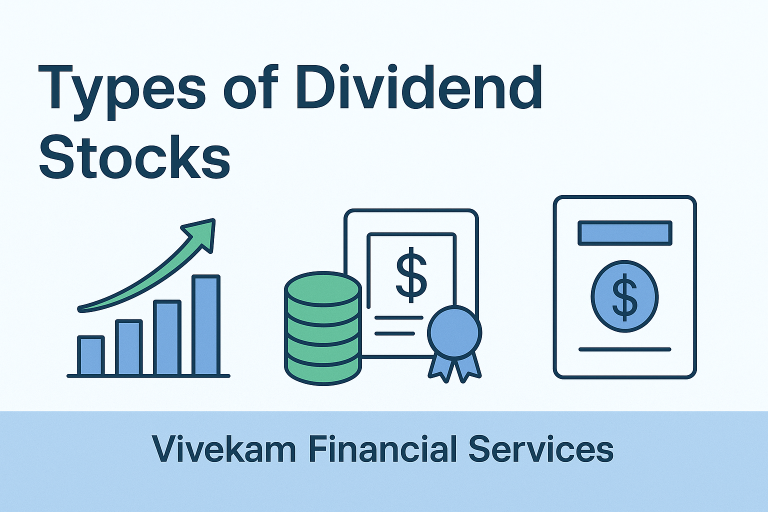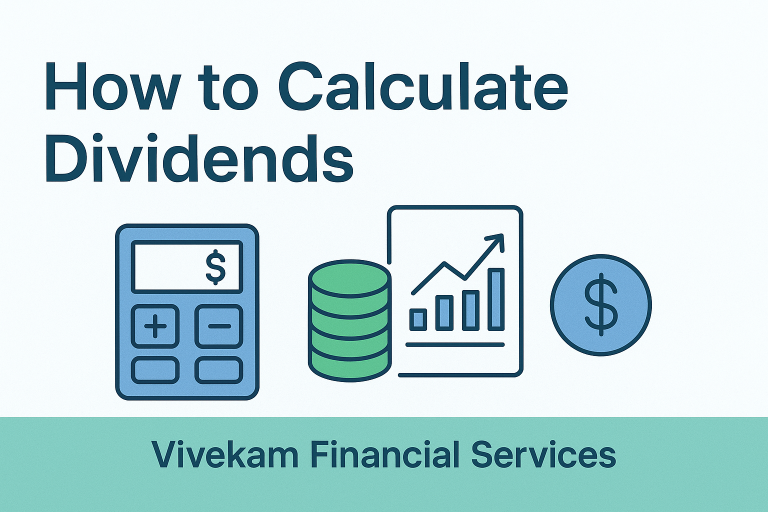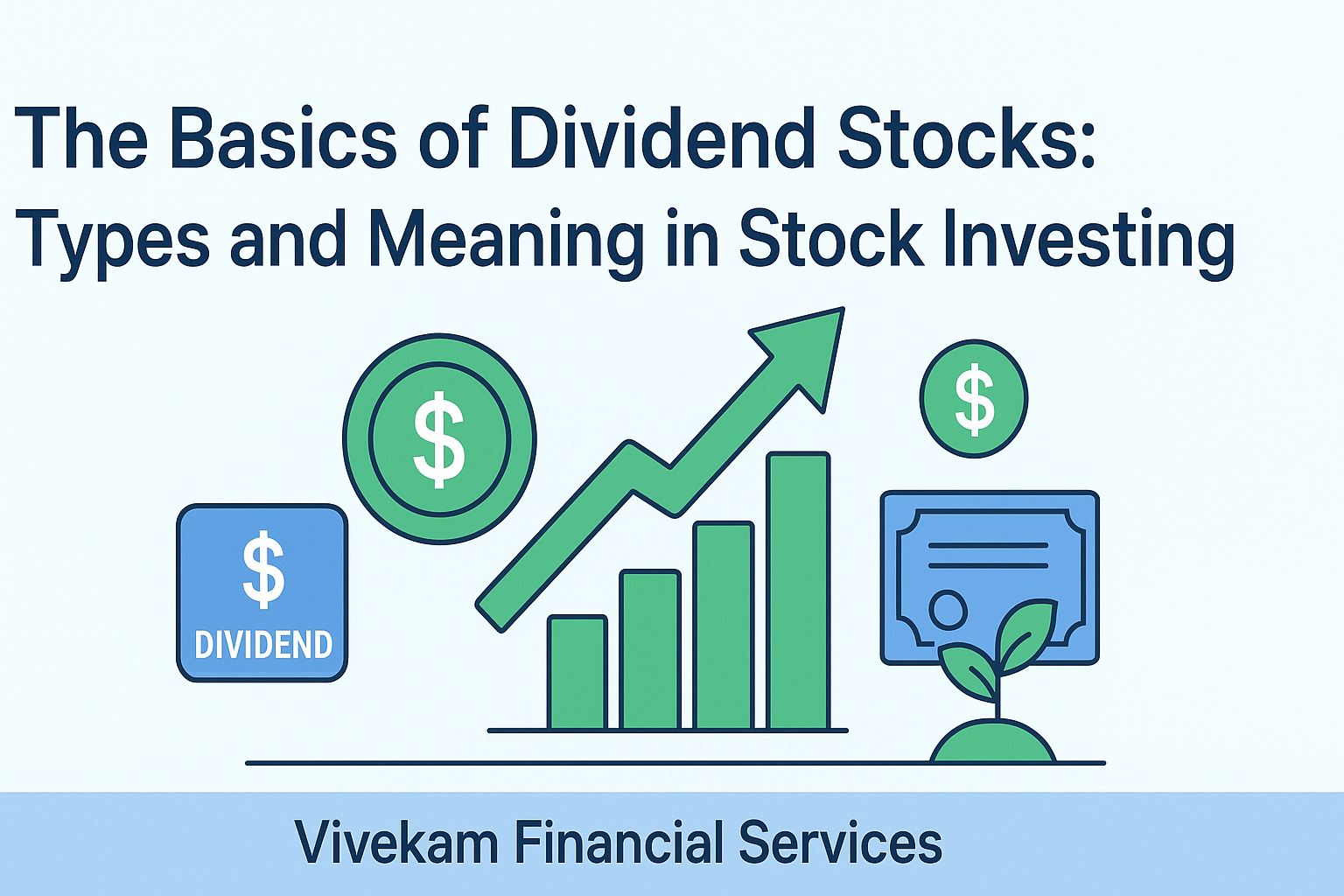The Basics of Dividend Stocks: Types and Meaning in Stock Investing

Introduction to Dividend Stocks
When most people think of making money in the stock market, they picture buying low and selling high. But here’s the twist—stocks don’t just grow in price; some also pay you along the way. These are called dividend stocks, and they’re a favorite for investors who want regular income without cashing out their shares.
If you’ve ever wondered, “What are dividend stocks, and why do investors love them so much?”, you’re in the right place. Let’s break it down.
What Are Dividend Stocks?
Dividend stocks are basically shares of companies that share their profits with you in the form of dividends. Think of it like being a part-owner of a bakery: every few months, the bakery doesn’t just grow in value, it also hands you a piece of the profits.
Most dividend payments are quarterly, though some companies pay monthly or yearly. You’ll often find dividend stocks in industries like consumer goods, finance, or utilities—companies that don’t just grow, but also consistently generate steady profits.
Why Companies Declare Dividends
So why would a company hand out cash instead of keeping it? A few reasons:
- To reward loyal investors.
- To attract income-seeking investors who want more than just stock growth.
- To show financial strength.
Companies that declare dividends regularly send a strong signal to the market: “We’re doing well, and we’ve got enough money to share.”
Understanding Dividend Terminology

Dividend Yield Meaning
The dividend yield is your income return from dividends, expressed as a percentage of the stock price.
Formula:
Dividend Yield = (Annual Dividend per Share ÷ Price per Share) × 100For example, if you own a $100 stock paying $5 per year in dividends, your dividend yield is 5%. It’s like earning 5% annual interest, but with stock ownership perks.
Dividend Payout Ratio Explained
The dividend payout ratio shows how much of a company’s profits are being paid out as dividends.
Formula:
Dividend Payout Ratio = (Dividends Paid ÷ Net Income) × 100A low payout ratio often means the company is reinvesting in growth. A very high one could be a red flag that the company is paying too much, leaving little room for tough times.
Dividend Yield vs Dividend Ratio
- Dividend Yield → Focuses on what you get as a shareholder.
- Dividend Payout Ratio → Focuses on what the company gives vs. keeps.
- Smart investors look at both to decide whether a company’s dividends are sustainable.
Types of Dividend Stocks

Common Dividend Stocks
These are your typical everyday dividend-paying shares. They come with ownership rights and voting power.
Preferred Dividend Stocks
Preferred stocks are more like “VIP shares.” They pay fixed dividends and have priority over common stocks. The tradeoff? Usually no voting rights.
Special Dividend Stocks
These are one-off dividends. Companies sometimes share a big bonus payout if they sell assets or hit an unusually strong profit year.
High Dividend Yield Stocks
Stocks that pay above-average dividends. Tempting? Yes. Always safe? Not necessarily. High dividend yield stocks can sometimes signal financial struggles if the payouts aren’t backed by solid profits.
How to Calculate Dividends

Dividend per Share Formula
If a company pays $1 million in dividends and has 500,000 shares, then:
Dividend per Share (DPS) = $1,000,000 ÷ 500,000 = $2 per share.
Calculating Dividend Yield
If the share price is $40 and annual dividends are $2, then:
Dividend Yield = (2 ÷ 40) × 100 = 5%.
So, you’d be making a 5% annual return just from dividends—without even considering stock price growth.
Advantages of Investing in Dividend Stocks
Regular Passive Income
One of the biggest draws of dividend stocks is that sweet, regular income. It’s like receiving a paycheck from your investments, making them perfect for retirees or anyone who loves consistent cash flow.
Lower Investment Risk
Companies that consistently pay dividends tend to be financially stable. They may not shoot up in value overnight, but they offer a cushion during market turbulence.
Long-Term Wealth Building
Reinvesting dividends through a Dividend Reinvestment Plan (DRIP) is like planting seeds that keep growing into trees. Over time, compounding turns those small payouts into significant wealth.
Pros and Cons of Dividend Stocks
Benefits of Dividend Stocks
- Consistent passive income.
- Potential to reinvest and grow wealth.
- Companies paying dividends are often stable.
Drawbacks of Dividend Stocks
- Not all companies pay dividends.
- Companies can cut or stop dividends during tough times.
- Chasing only high dividend yields can backfire.
How to Choose Dividend Stocks
Evaluating Dividend Yield
A yield between 3%–6% is usually considered safe. If you see a 12% dividend yield, pause. It might not be sustainable.
Checking Dividend Payout Ratio
A healthy payout ratio is usually between 30%–60%. Too high means risk. Too low means the company may not be investor-friendly.
Analyzing Company Fundamentals
Don’t just chase yields—look at revenue growth, debt, and cash flow. If the fundamentals don’t hold up, dividends might not either.
Who Declares Dividends and How They Are Paid?
Role of the Board of Directors
Dividends aren’t automatic. The board of directors decides if, when, and how much is paid out.
Dividend Declaration Dates
Key dates to remember:
- Declaration Date: The day the dividend is announced.
- Ex-Dividend Date: You must own shares before this date to qualify.
- Record Date: The official date shareholders are recorded.
- Payment Date: The actual payday.
Dividend Payment Methods
Dividends can be paid in cash (most common), stock (extra shares), or occasionally, other assets.
Taxation on Dividend Stocks
Tax Treatment for Domestic Investors
In many countries, dividends are taxed as income. Some qualify for reduced rates if they’re considered “qualified dividends.”
Tax Treatment for International Investors
International investors may face dividend withholding taxes, which vary by country. Tax treaties can sometimes lower these rates.
Highest Dividend-Paying Stocks: Global Examples
U.S. Dividend Aristocrats
Think Coca-Cola, Johnson & Johnson, Procter & Gamble—giants that have increased dividends for decades.
European High Dividend Yield Stocks
Names like Royal Dutch Shell and Nestlé are investor favorites for consistent payouts.
Asian Dividend Stocks
Companies like TSMC (Taiwan Semiconductor) have built a reputation for steady dividends.
FAQs on Dividend Stocks
1. What are dividend stocks and how do they work?
They’re stocks that regularly share company profits with investors through dividends.
2. How to calculate dividends on stocks?
Divide total dividends paid by shares outstanding to get the dividend per share.
3. Are dividend stocks good for beginners?
Yes, because they’re usually stable and provide consistent returns.
4. What is a good dividend yield?
Generally 3%–6%. Anything much higher might be risky.
5. Are dividends guaranteed every year?
No. Companies can reduce or suspend dividends when times get tough.
6. What are the risks of dividend investing?
Risks include dividend cuts, chasing unsustainable yields, and overdependence on payouts.
Conclusion
Dividend stocks aren’t just about income—they’re about building long-term wealth while reducing risk. By understanding dividend yield, payout ratios, and the pros and cons of dividend stocks, you’ll be in a stronger position to choose wisely.
They’re not a magic bullet, but if chosen carefully, dividend stocks can provide both stability and growth—making them a great addition to any investment portfolio.







